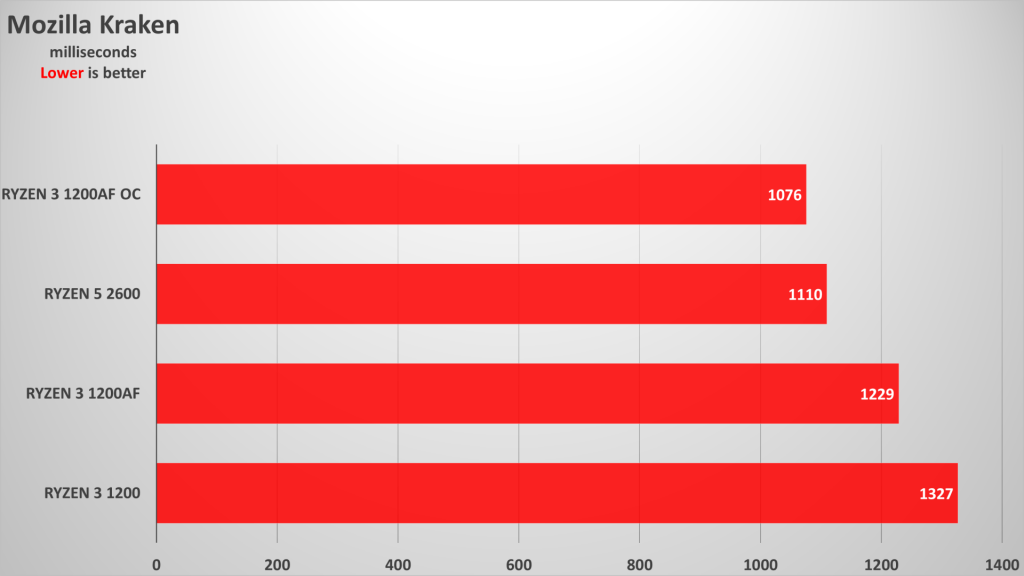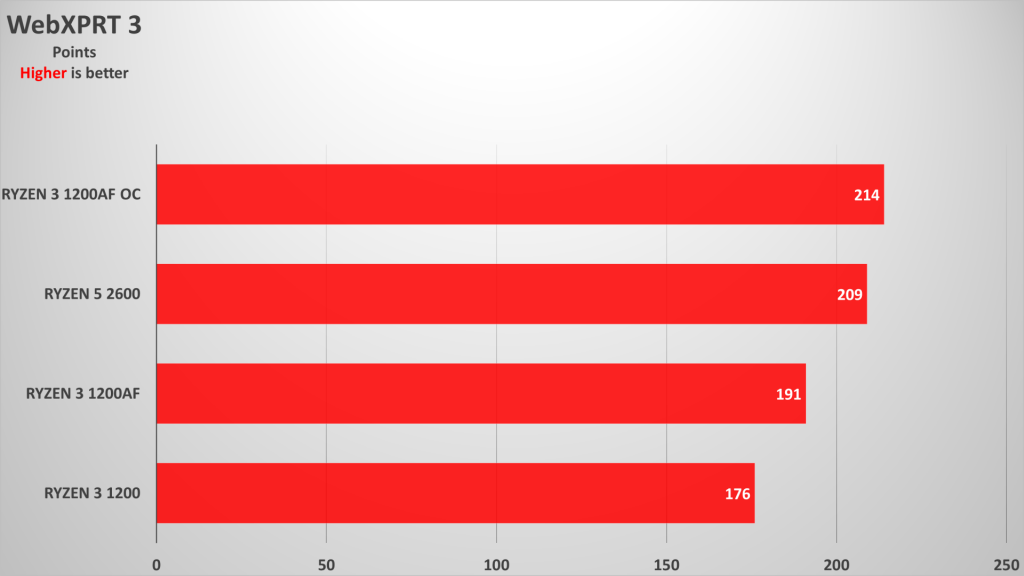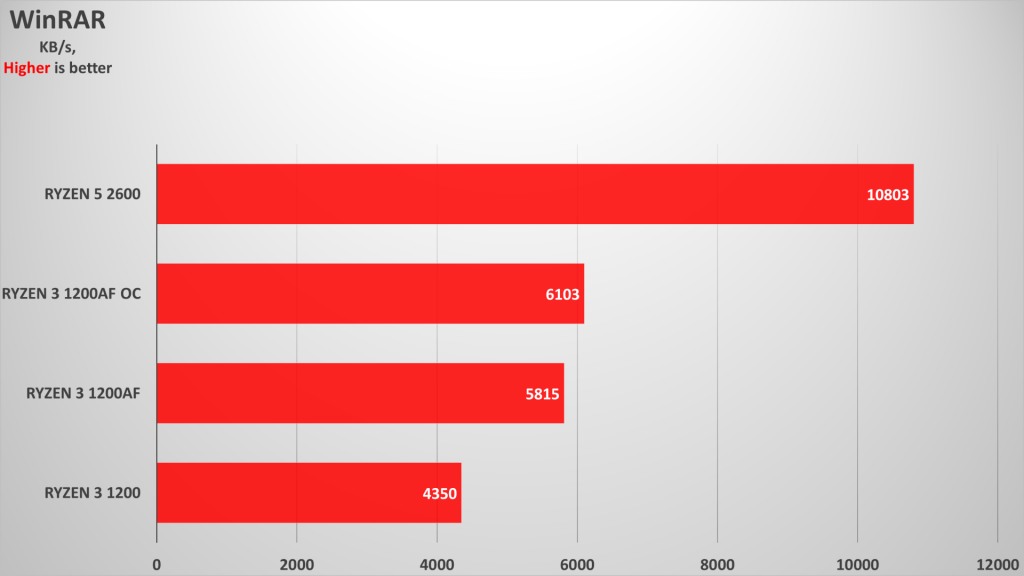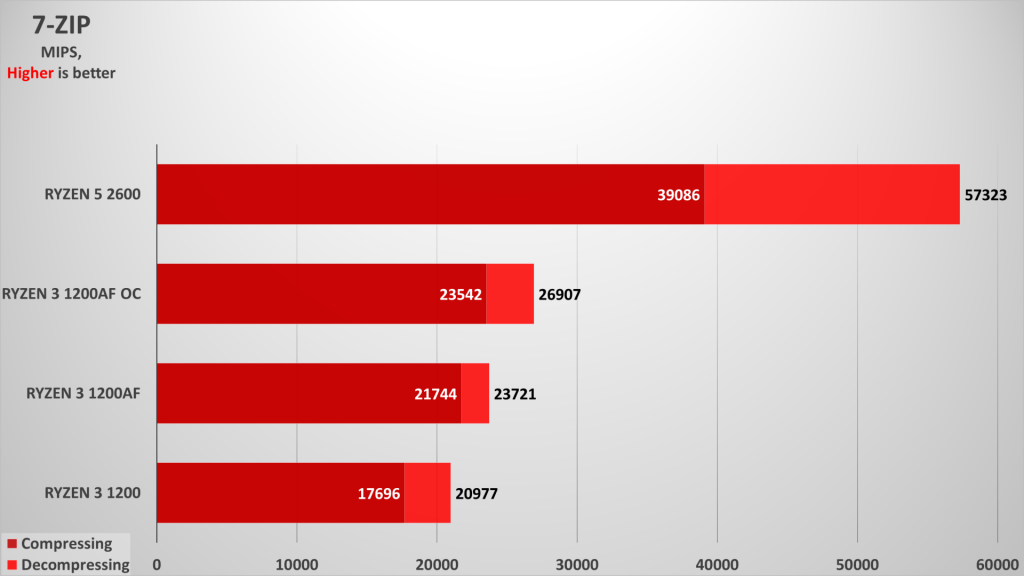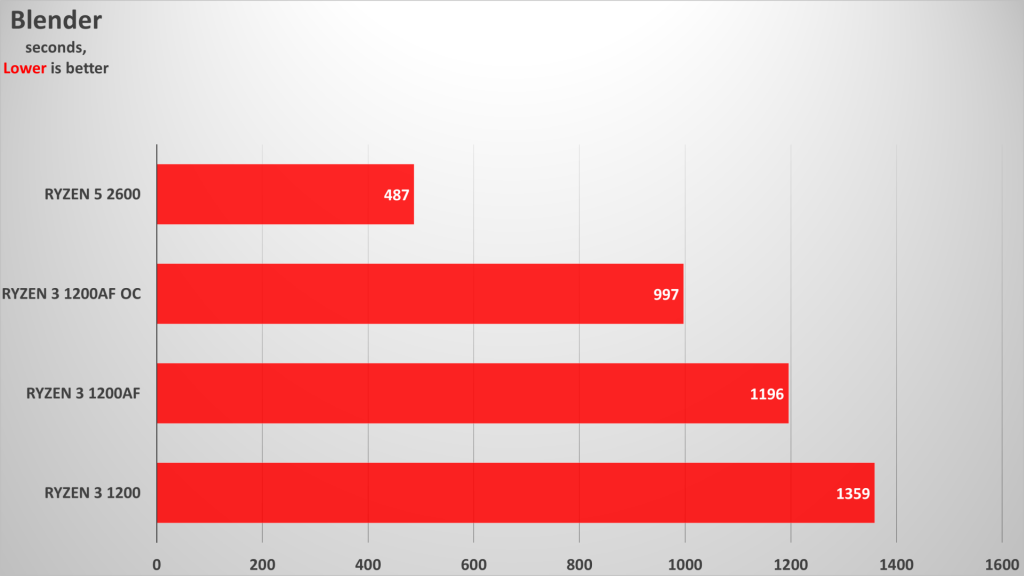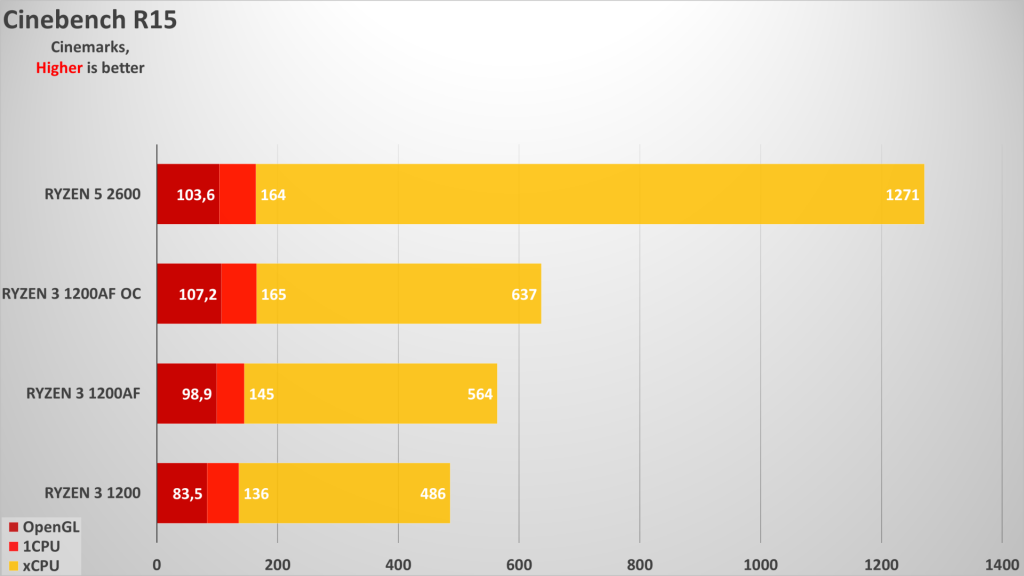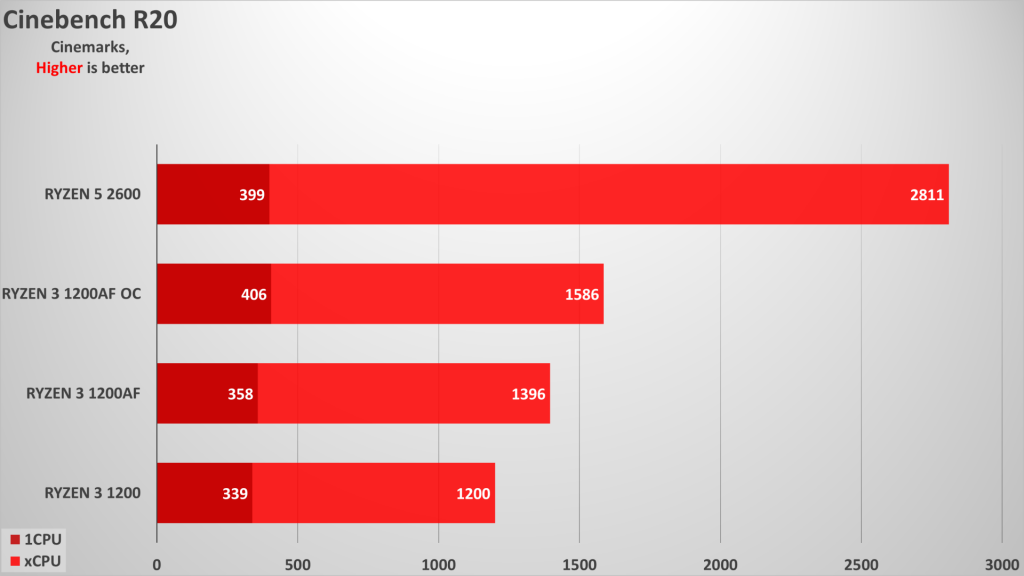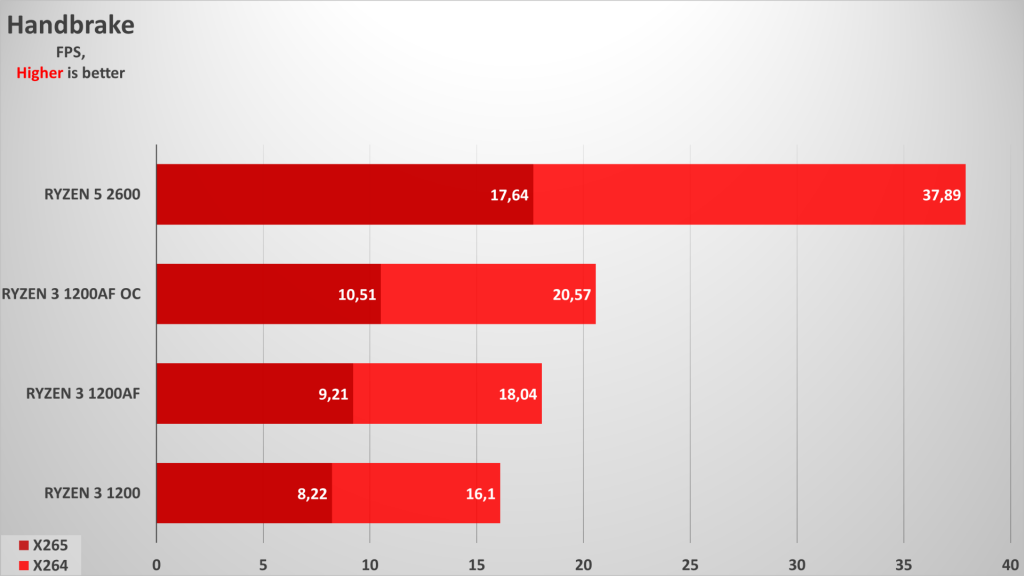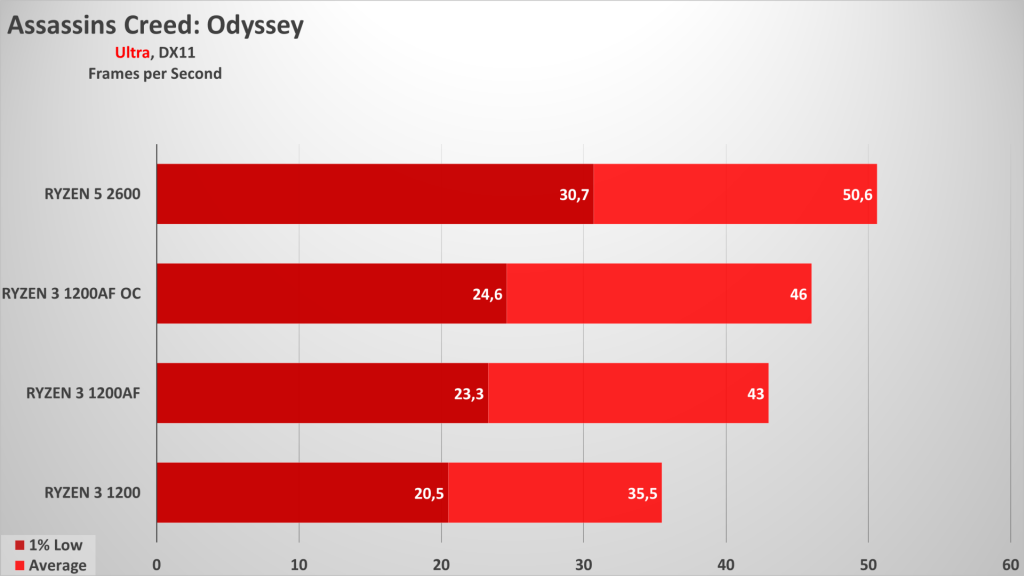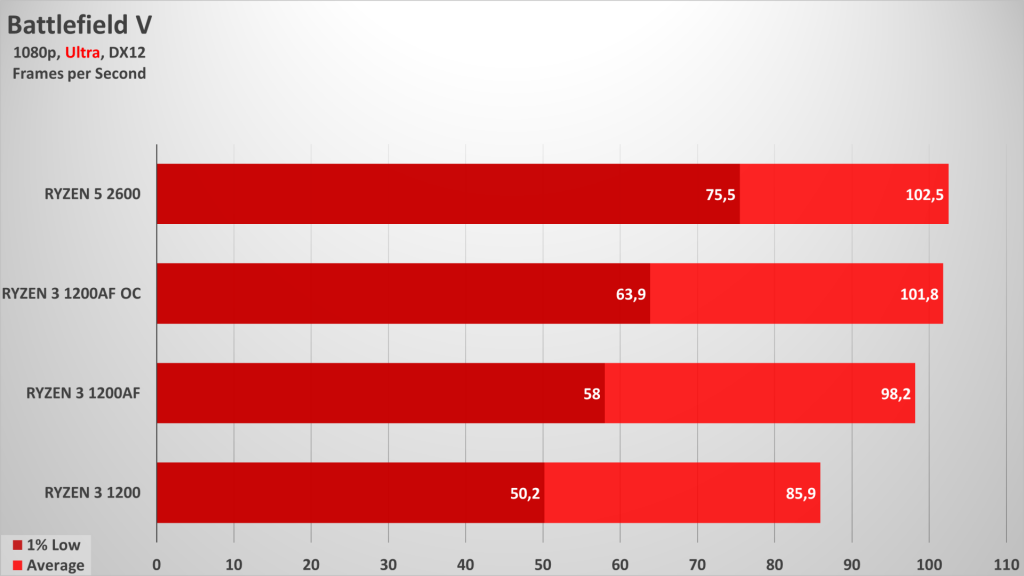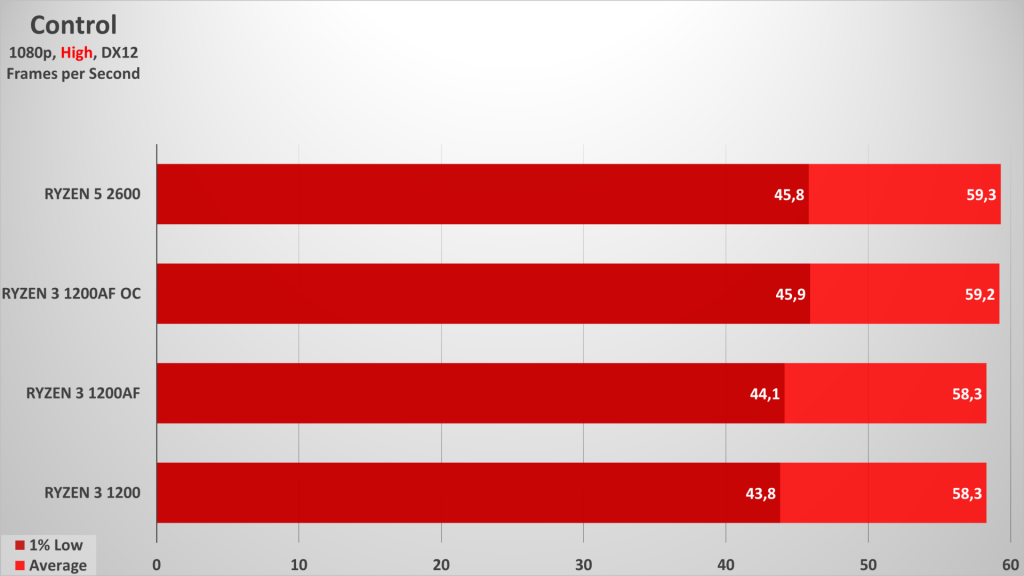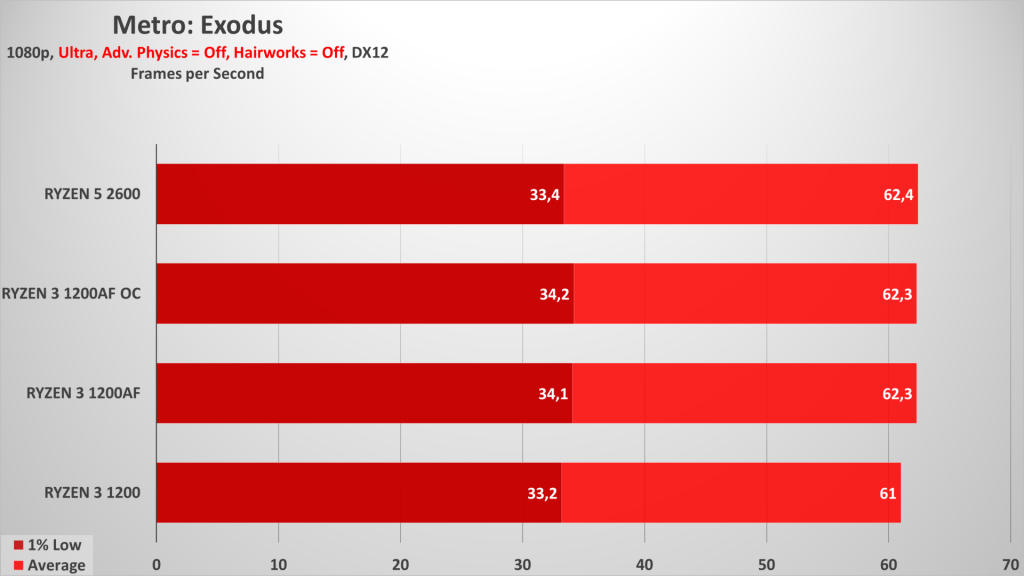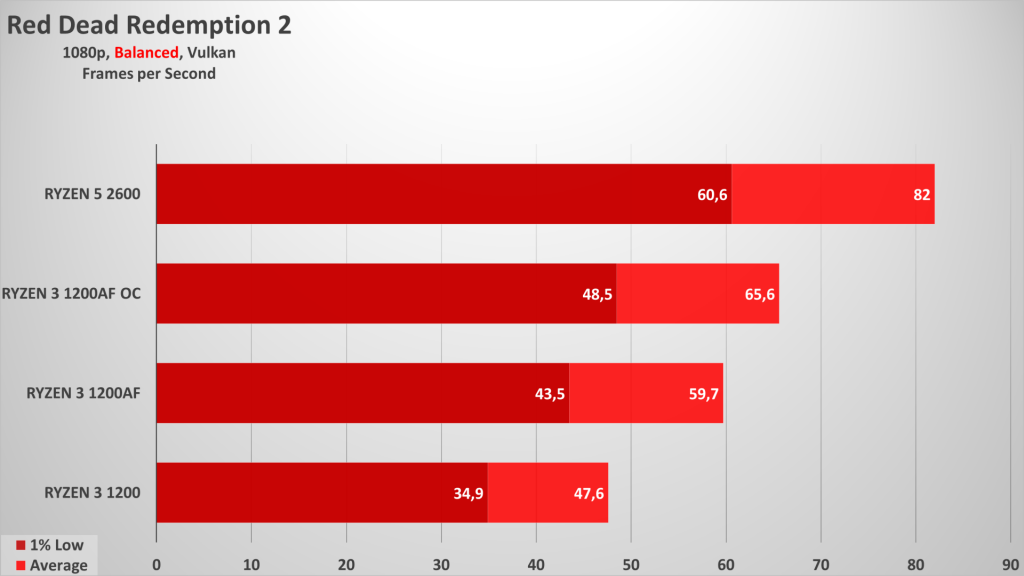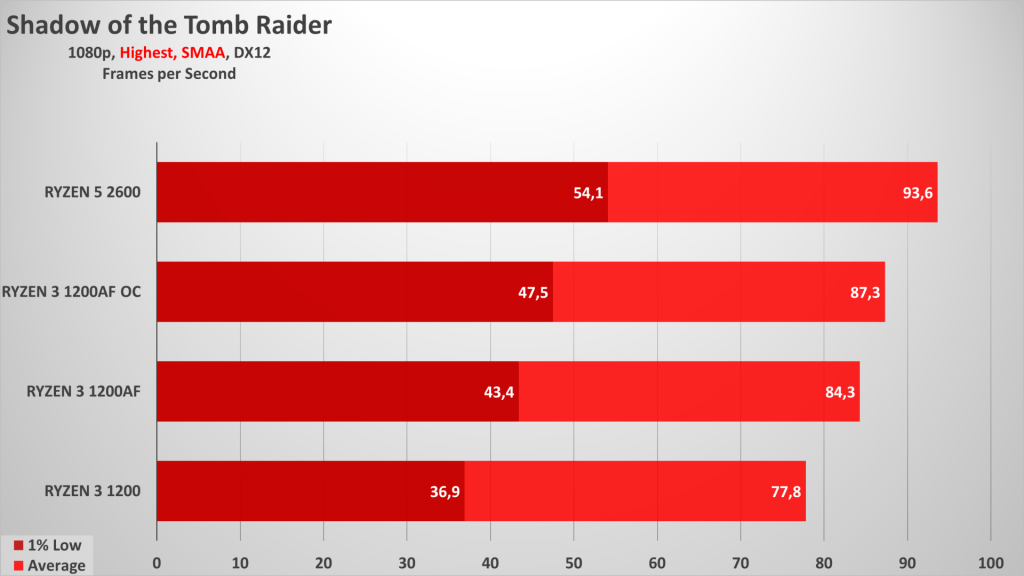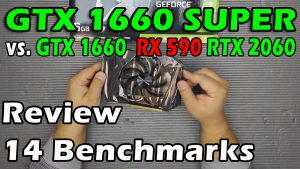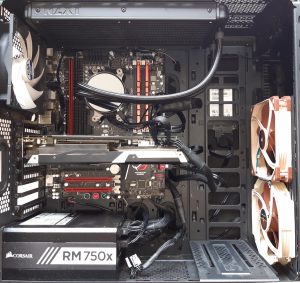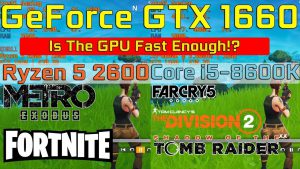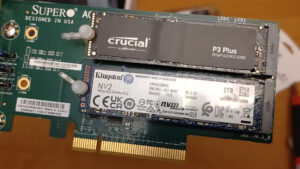
Application results
The benefits of the new architecture are clearly visible, especially worth noting are the results in Cinebench R15 OpenGL, WinRAR and 7-zip archiving. These results are highly dependent on the size and speed of the L3 cache, as well as the memory access time. Using only one CCX with all its memory, leads to a huge jump in these 3 tests. It is most notable in WinRAR the new model is 33% faster, which we will see in some games as well.
On average we have 12-16% gain in multi-threaded applications we have a 12-16% gain due to the fact that the processor was running at a higher frequency. And since in single-threaded the frequencies are much closer, we have “only” 6-8% gain, with the exception of the aforementioned of Cinebench R15 Open GL. However, on average, the increase is about 14%, which is a very decent value, usually it means a whole next model number.
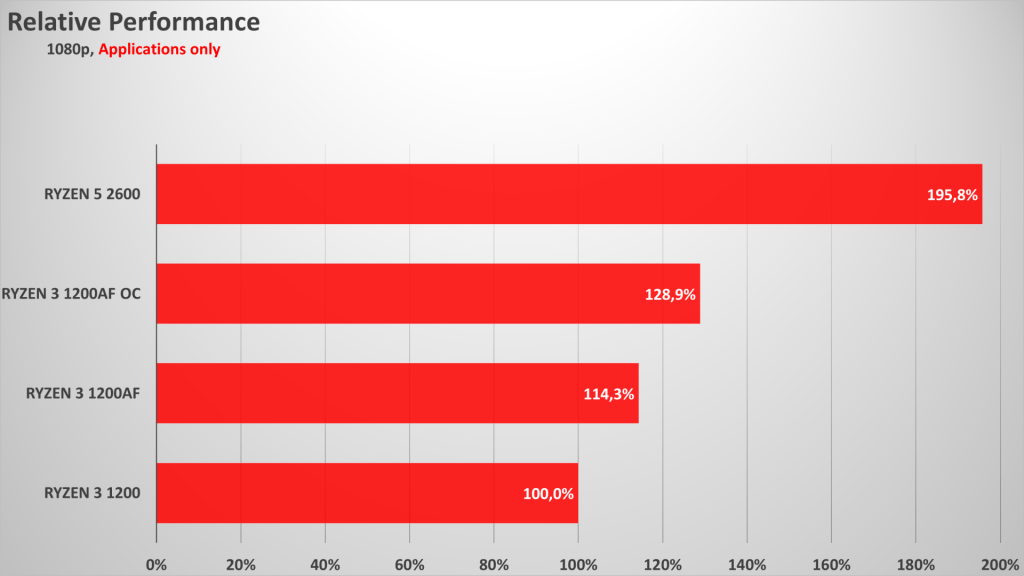
On top of this, overclocking adds about 13% on average, which is a very good result compared to the frequency achieved. In some single-threaded tests the overclocked Ryzen 3 1200 AF manages to get even or beat the results of Ryzen 5 2600. However, the latter simply eliminates any competition in multi-threaded applications with results up to over 2.5 times faster than the original Ryzen 3 1200. Assuming Ryzen 5 1600 AF is about 5% slower, the difference remains more than huge, so if you are dealing with something that wants more threads, the price difference to a 6 core model is more than justified.
Results in AAA Games (High Settings)
Typically, the results in these titles are high settings, which places far more emphasis on the graphics adapter. Although the Radeon RX 5600 XT is not the fastest on the market, it is still a pretty productive model. The only deviations here are Metro Exodus with Ultra (instead of Extreme) settings and Red Dead Redemption 2 on Balanced, as the game is orderly heavy.
In Metro Exodus and Control, there is almost no difference between the processors, as the games clearly do not use too much thread and are too heavy graphically so the load falls entirely on the GPU.
However, in the other 4 titles, we have little or no difference, despite the high graphics settings. In Battlefield V, after the initial significant leap between the old and the new Ryzen 3 1200, there is no significant difference in the average frames, which means that more or less with the 1200 “AF” reaches the Radeon RX 5600 XT cap . However, the picture is different if we look at the 1% minimums, with each step we see a noticeable growth in frames, with the Ryzen 5 2600 finally delivering 50% higher performance than the Ryzen 3 1200 and even 18% more than the overclocked Ryzen 3 1200. ” AF ”, which means significantly better gameplay.
The situation in the other 3 games is very similar, with both medium and low frames growing in each of them. Given that 2 of them are even at very high settings, this means that pure 4-core processors without SMT technology simply cannot load enough graphics adapter, which is practically on the border between the middle and high class nowadays. Moreover, the Ryzen 3 1200 in its original form cannot achieve 60 FPS in Assassins Creed Odyssey and RDR2, even in the first one below 40 FPS. And although the 1200 AF provides a very steady 20-25% gain, it is still not enough. In ACO, even the 6-core, 12-tier Ryzen 5 2600 barely reaches 50 frames / sec on average. However, its benefit is very high in any game, especially for the minimum frames, with ACO at least achieving 30 FPS minimums, and in RDR2 only allowing the minimums to exceed 60 FPS.
Overall, if we count the two games that clearly support the graphics adapter, we have a 12% increase on average from the Ryzen 3 1200 “AF”, another 5.5% from overclocking, and finally another 10% from above if we jump to Ryzen 5 2600. But as we saw from game to game the differences are big.
